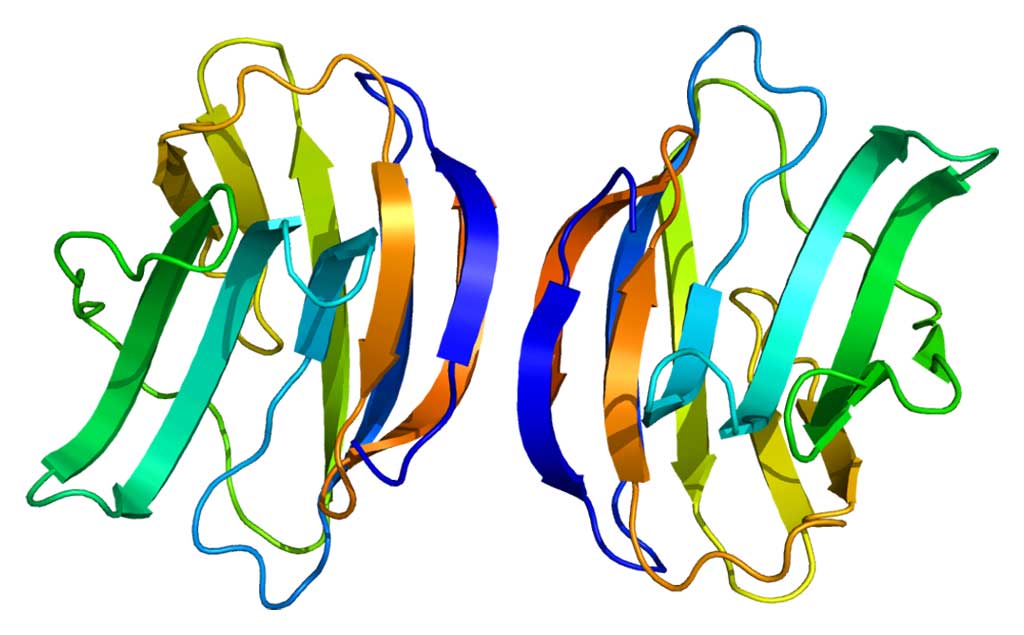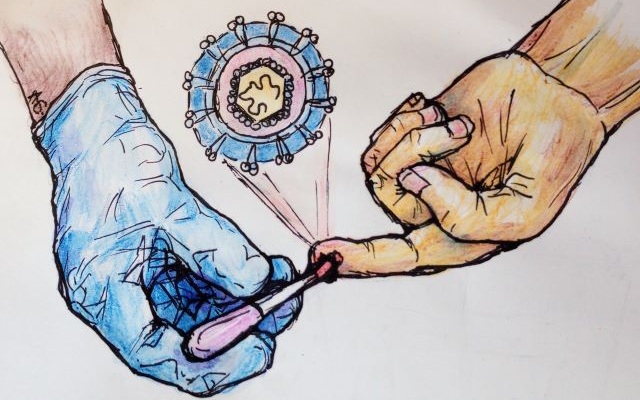Elevated Galectin-1 Levels in Sepsis Reflect Danger of Cytokine Storm Development
By LabMedica International staff writers
Posted on 11 Jan 2021
Increased concentration of the beta-galactoside-binding protein “galectin-1” in sera from human sepsis patients has been found to be a novel biomarker for cytokine storms that may occur in cases with runaway sepsis.Posted on 11 Jan 2021
Cytokine storms form during sepsis due to the overreaction of the body to an infection. Cells damaged as a result of infection or injury release cytokines and other danger molecules called alarmins that can generate a cytokine storm.

Image: Molecular model of the galectin-1 protein (Photo courtesy of Wikimedia Commons)
Damage-associated molecular patterns (DAMPs), also known as danger-associated molecular patterns, danger signals, and alarmin, are host biomolecules that can initiate and perpetuate a noninfectious inflammatory response. For example, they are released from damaged or dying cells and activate the innate immune system by interacting with pattern recognition receptors (PRRs). In contrast, pathogen-associated molecular patterns (PAMPs) initiate and perpetuate the infectious pathogen-induced inflammatory response. DAMPs are key determinants that shape the aftermath of inflammatory cell death. However, the identity and function of the individual DAMPs released are poorly defined.
Investigators at the University of Connecticut (Storrs, USA) and their colleagues sought to the determine the identity and function of individual DAMPs released in response to cytosolic lipopolysaccharide (LPS).
Galectin-1 release is a common feature of inflammatory cell death and galectin-1 promotes inflammation and plays a detrimental role in LPS-induced lethality. The investigators found that sepsis patients had higher levels of galectin-1 than those found in non-sepsis critical care patients or in healthy individuals. On the molecular level, galectin-1 inhibition of CD45 (Protein tyrosine phosphatase, receptor type, C) seemed to be the cause of its unfavorable role in promoting cytokine storms.
The galectin-1 study was published in the January 4, 2021, online edition of the journal Nature Immunology.
Related Links:
University of Connecticut













